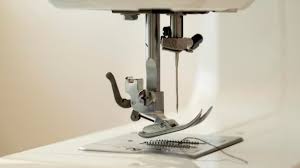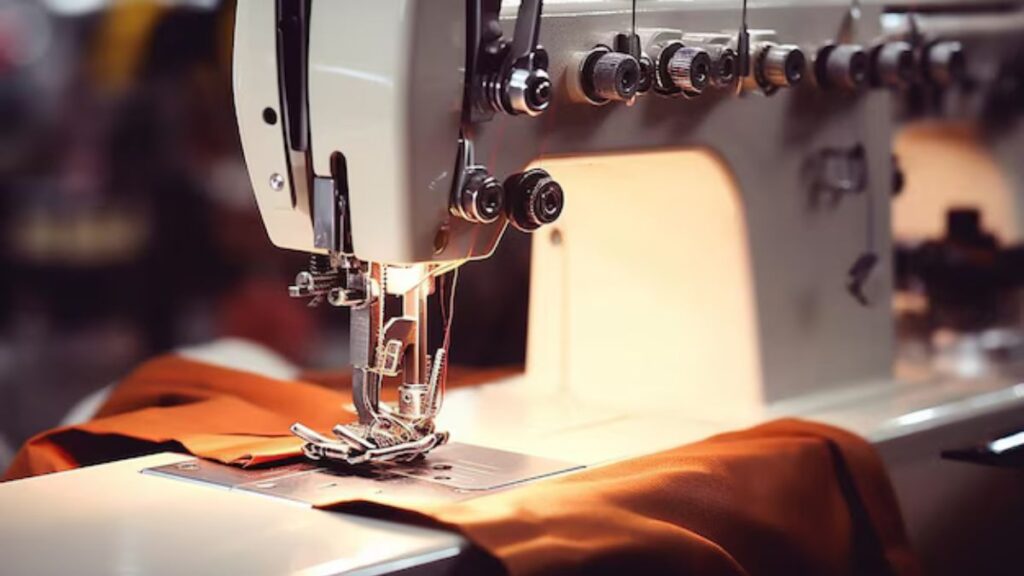An auto foot lift overlock pedals is a vital tool for sewists. It automatize the lifting of the presser foot. This feature enhances efficiency during sewing tasks. Overlock machines play a crucial role in sewing. They finish edges and seams, preventing fraying. These machines create professional-looking results quickly. The auto foot lift pedal allows for hands-free operation. This guide explore the benefits, features, and top models available.
Benefits of Using an Auto Foot Lift Overlock Pedal
A. Increased Productivity and Speed in Sewing
Using an auto foot lift overlock pedal significantly boosts productivity. It allows for quicker transitions between fabric layers. Seamstresses can focus on guiding the fabric instead of working the foot. This leads to faster completion of projects. The automation of foot lifting reduces manual effort. Consequently, sewists can complete more work in less time.
B. Reduction in Physical Strain During Long Sewing Sessions
Long sewing sessions can lead to fatigue and discomfort. An auto foot lift pedal minimizes physical strain on the legs. It reduces the need for constant foot pressure. This feature is especially beneficial for professional sewists. Comfort during sewing enhances overall performance and enjoyment. A more relaxed sewing practice can lead to better creativity.
C. Improved Consistency in Stitch Quality
Consistency is vital in sewing projects. The auto foot lift ensures even pressure on the fabric. This leads to uniform stitches throughout the project. It helps prevent puckering and uneven seams. High-quality stitches are easier to achieve with this tool. Quality control becomes simpler with the pedal’s assistance.
D. Enhanced Control Over Fabric Handling
Control is essential when working with various fabrics. The auto foot lift allows for better ability to move. Sewists can handle delicate or slippery fabrics with ease. This feature is particularly useful for Complex designs. It provides confidence when tackling complex projects. Better control leads to improved accuracy and creativity.
Key Features to Consider
A. Sensitivity and Responsiveness of the Pedal
The sensitivity of the pedal affects its overall performance. A responsive pedal reacts quickly to foot pressure. This ensures smoother operation during sewing. Look for pedals that provide instant feedback. High sensitivity allows for precise control over sewing speed.
B. Compatibility with Various Overlock Machine Models
Not all pedals fit every overlock machine model. It is Important to check compatibility before purchasing. Many manufacturers provide lists of compatible models. Ensure a proper fit is crucial for outstanding performance. A well-matched pedal enhances the sewing experience.
C. Durability and Build Quality
Durability is vital for long-term use of the pedal. A well-built pedal can withstand regular use. Look for pedals made from high-quality materials. A sturdy construction ensures reliability over time. Invest in quality equipment pays off in the long run.
D. Additional Features
Some auto foot lift pedals come with extra features. Adjustable height can enhance comfort for different users. Speed control allows for better management of sewing tasks. These additional features can improve the overall functionality of the pedal. Assessing these options can lead to better performance.
Top Auto Foot Lift Overlock Pedals
Review of the Top Models Available in the Market
There are several excellent auto foot lift overlock pedals available. Here are three top models value considering.

1. Model 1: Brother 1034D
Features:
- Fast and efficient overlocking.
- Auto foot lift feature.
- Color-coded threading system.
Pros:
- Easy to use for beginners.
- Versatile for various fabrics.
- Compact design for easy storage.
Cons:
- Limited advanced features.
- May require adjustments for thicker fabrics.
2. Model 2: Janome 8002D
Features:
- Adjustable stitch width and length.
- Auto foot lift mechanism.
- Differential feed for better fabric handling.
Pros:
- Excellent for knit and stretch fabrics.
- Reliable performance with consistent results.
- User-friendly interface. Cons:
- Slightly heavier than other models.
- Requires careful threading.
3. Model 3: Juki MO654DE
Features:
- Automatic foot lift and differential feed.
- High-speed stitching capability.
- Adjustable tension settings.
Pros:
- Professional-grade performance.
- Ideal for heavy fabrics.
- Durable and long-lasting.
Cons:
- Higher price point.
- Steeper learning curve for beginners.
B. Pricing Comparison and Value for Money
Prices for auto foot lift overlock pedals vary. Basic models can start around $200. More advanced models may cost $500 or more. Consider the features and performance when evaluating value. Investing in a quality pedal can enhance the sewing experience significantly.
How to Choose the Right Auto Foot Lift Overlock Pedal
A. Assessing Sewing Needs and Project Types
Consider your specific sewing needs before purchasing. Different projects may require different features. Assess the types of fabrics you frequently use. If you work with delicate fabrics, look for a sensitive pedal. For heavy fabrics, durability and strength are essential.
B. Evaluating Personal Comfort and Usability
Comfort is crucial when selecting a pedal. Test the pedal if possible before buying. Ensure it feels comfortable underfoot. Evaluate how easy it is to operate. A comfortable pedal enhances the overall sewing experience.
C. Importance of Reading Reviews and Expert Recommendations
Reading reviews can provide valuable insights. Look for feedback from other sewists. Expert recommendations can help guide your decision. Check online forums and sewing communities for advice. Gathering information can lead to a more informed choice.
Installation and Maintenance Tips
A. Step-by-Step Guide to Installing the Pedal
- Unpack the Pedal: Remove the pedal from its packaging.
- Locate the Connection Port: Find the connection port on your overlock machine.
- Connect the Pedal: Plug the pedal into the machine securely.
- Adjust Settings: Set the pedal sensitivity and height if applicable.
- Test the Pedal: Run a few test stitches to ensure proper function.
B. Regular Maintenance Practices to Ensure Longevity
Maintaining your auto foot lift pedal is essential. Keep it clean and free from dust. Regularly check for any loose connections. Following maintenance practices can prolong the life of your pedal.
C. Troubleshooting Common Issues
If you experience issues, consider these troubleshooting tips:
- Pedal Not Responding: Check the connection to the machine.
- Inconsistent Lifting: Adjust the sensitivity settings.
- Noise During Operation: Inspect for debris or loose parts.
Case Studies and User Testimonials
A. Real-Life Experiences from Professional Sewists
Many professional sewists have shared their experiences. They report increased productivity after using auto foot lift pedals. One sewist noted a significant reduction in fatigue. Another mentioned improved stitch quality on delicate fabrics.
B. Analysis of Productivity Improvements After Using the Pedal
Sewists have observed measurable productivity gains. Projects that once took hours can now be completed in less time. The ability to focus on fabric handling is a game-changer. This leads to more creative possibilities and fewer mistakes.
C. Feedback on Specific Features and Performance
Users appreciate the responsiveness of the pedals. Many highlight the importance of comfort during long sessions. The auto foot lift feature is frequently praised for its convenience. Overall, positive feedback emphasizes the benefits of these tools.
Conclusion
An auto foot lift overlock pedal is a valuable addition to any sewing setup. It enhances productivity, reduces physical strain, and improves stitch quality. Understanding the key features can help you choose the right model. Regular maintenance ensures longevity and performance. User testimonials highlight the significant benefits of these pedals. Investing in quality equipment can transform your sewing experience. Embrace the convenience of an auto foot lift overlock pedal today.

